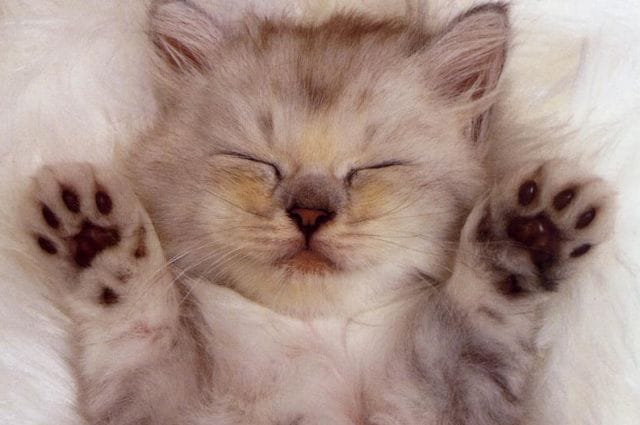Deep in the bowels of an obscure online forum, an internet commenter reveals his darkest secret. “Every time I see something cute, I just wanna squeeze it to death,” he writes. “Am I normal?”
“Don’t worry — I know what you mean,” consoles another forum user. “I used to love toads when I was little and I picked them up and squeezed them to death without realizing it. I was always so sad and I never knew why they kept dying until my Dad told me I was killing them.” A third participant then chimes in, reveling in her shared derangement:
“Oh my goodness. When I stroke kittens I feel like I want to grab them by the tail, swing them around a bit, and throw them out the window, then CRUSH them until they explode. =] Because they’re Soooooooo cutttee! (P.S. I love cats though, I would never do that).”
In rapid succession, 50 or 60 others come out of the woodwork, all proclaiming a mutual desire to squeeze, maul, or otherwise incapacitate particularly cute animals — simply because the creatures’ aesthetics are “just too much to handle.” In literature, the theme is well covered: Lennie, a big brute in John Steinbeck’s Of Mice and Men, loves his little mouse so much that he pets it too hard and kills it; in Raymond Carver’s What We Talk About When We Talk About Love, a character notes that her husband once “loved her so much he tried to kill her.” In everyday life, phrases like “I just want to pinch those little cheeks!” and “So cute! I want to squish it!” are commonplace, received by human babies and animals alike.
While the desire to harm cute animals or people seems strange (and even borderline psychotic), it could actually be rooted in the scientific makeup of our brains. In a 2013 presentation at the Society for Personality and Social Psychology, two Yale graduate students presented a study they’d conducted exploring the tendency to want to essentially murder an animal for being too cute; appropriately, they coined this phenomenon “cute aggression.”
The students, Oriana Aragon and Rebecca Dyer, first showed 109 study participants animal photos of three categories: cute (fluffy kittens, puppies), funny (a dog sticking its head out of a car window), or “normal” (read “ugly”) animals. Participants were asked to rate the pictures on both cuteness and how much they incited a loss of control (they were asked to agree/disagree with statements like “I can’t handle it!” and “I just want to squeeze it to death!”); far and away, cute animals harbored the most aggression.
Next, Aragon and Dyer divided a new group of 90 study participants into three groups and showed them the same photos. During the process, each participant was given a sheet of bubble wrap and told to pop it based on his or her emotions while viewing the slides. The result? Those who watched the “cute” slideshow popped significantly more bubbles (120) than those who were shown either the funny (80) or norm-state (100) animals. In an interview with Popular Science, Dyer hypothesized:
“Some things are so cute that we just can’t stand them. We think it’s about high positive-affect, an approach orientation and almost a sense of lost control. It’s so adorable, it drives you crazy. It might be that how we deal with high positive-emotion is to sort of give it a negative pitch somehow. That sort of regulates, keeps us level and releases that energy.”
Dyer hypothesizes that this aggression may be the brain’s response to the overwhelming joy incurred by such creatures (similar to how some people cry when intensely happy). The research duo plan to conduct a follow-up study delving more into the cognitive roots of these types of reactions. And as for the safety and well-being of cute animals everywhere, Aragon adds that the existence of cute aggression doesn’t necessarily mean that people have an innate desire to maim animals.
“We don’t have a bunch of budding sociopaths in our studies that you have to worry about,” she says. “So, no need to guard your kittens.”
This post was written by Zachary Crockett. Follow him on Twitter here, or Google Plus here.




